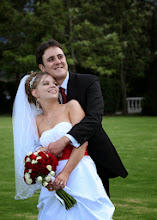Here I want to note something before I begin that I've already mentioned before. None of this is neccessary. Pick and choose what you want to do. The object is to write the story and if you are creating plant life just to create it, yes it will make your world more realistic, but it's... I won't say a waste of time but it's... time spent agonizing over what this particular plant (or animal, or whatever) should look like or do while it would be better spent actually writing the story.
The best advice I've found is finding a balance. But onto the post..
Flora
Name
This is something I come back to but I added here for organization purposes but for right now I'm leaving this section blank. I'm going to add it to my list of names I need to come up with.Biome
The first thing I look at when creating new plant life is the biome it will be located in. It will give quite a bit of insight on the plant itself. You are not going to find large trees with beautiful green leaves and flowers that bloom in the spring in the Tundra biome. It's just not going to happen. The tundra doesn't have many trees and when it does, they are usually stunted because of the lack of nutrients they receive. Have another look at the biomes and see what kind of plants normally grow there.While doing this I would normally look at where my story is going to be located to determine which biome it will be in. If most of my story is going to be located in the desert and I choose the tundra to create this plant how is that going to work into my story?
For right now though because I don't have an actual "area" yet, I'm going to randomly pick one. I'm going to go with forest and to narrow it down even further I'll go ahead and say a rainforest or tropical forest.
Type
While the biome I chose has already given me a starting point here is where I choose the type of plant. There are SO many to choose from and it all depends on what your making the plant for. If you need it for something specific then choose what you need (a certain flower that cures blood poisoning when cooked with the seeds of a certain fruit?) but if your using it for plainly world building and just giving the area a foreign feel then be creative (a vine that is climbing the castle walls or a tall grass where serpents hide) Whatever you want.As for me I'm going to say a flower.
Use
I already gave a prelude to it in the above section. This is where we will be looking at what your characters can/will be using this particular plant for. To start off think of all the things we do with plants.1. Food - potatoes, beans
2. Heat - wood
3. Structures/furniture - wood
4. Oxygen - plants release it into the air while using up carbon dixocide
5. Medicine - Opium poppy (this is used in morphine)
6. Clothing - cotton
And that's not even all of it... we use them for paper, ceremonies, home decor, and definitely for landscaping. Can you think of anything else?
I'm going to create a flower that is used for a wedding ceremony. It is put in the hair of the bride by the groom which is later taken out and crushed and cooked and they drink it together after the ceremony ends.
If you'll notice here now I have created not only a plant but tiny bits of information about the society just from a flower. That's the beauty of world building.
Description
This is the really fun part. Now you get to decide what it looks like. While this is FUN it is also really HARD (for me, at least). I find it's easier by looking up exotic plants to get a feel for something different and then making up the rest.My flower looks like a daisy in a way except the petals stick up in a rounded sort of way essentially making the flower look like a tiny teacup. They are usually white white streaks of pink or purple running through them but other known colors are solid white, pink, purple, or blue, or white with blue streaks. The most rare color is pink with white streaks instead of the other way around.
The husband must find the flower so he usually goes looking for the most rare because it is said to give the couple luck.
Also another little tidbit of how this particular society works and how they think.
Other
This is nothing specific just whatever else you think you'll need or want to include. I don't have anything else to add so this section I would leave blank but here include everything the other sections didn't cover. You could explain how the plant is cooked, why it is forbidden to plant/pick/touch, the way it is used in a spell. Anything.Back to Name
Since I've finished this plant creation I'll now put it in my little table as "Rainforest Flower" so I know what I'm talking about.Next time I'll look at how I create animals but until then if any of you have created a plant according to this share it with me! I'd love to see how it worked for someone else. Or share with me how YOU come up with plant life.




- Follow Us on Twitter!
- "Join Us on Facebook!
- RSS
Contact